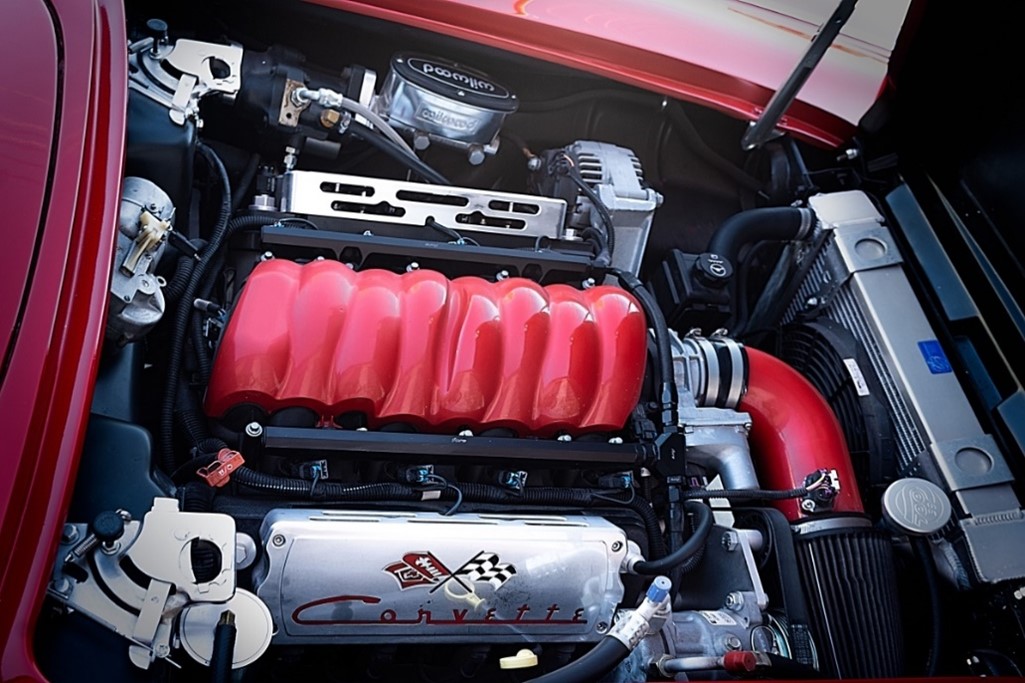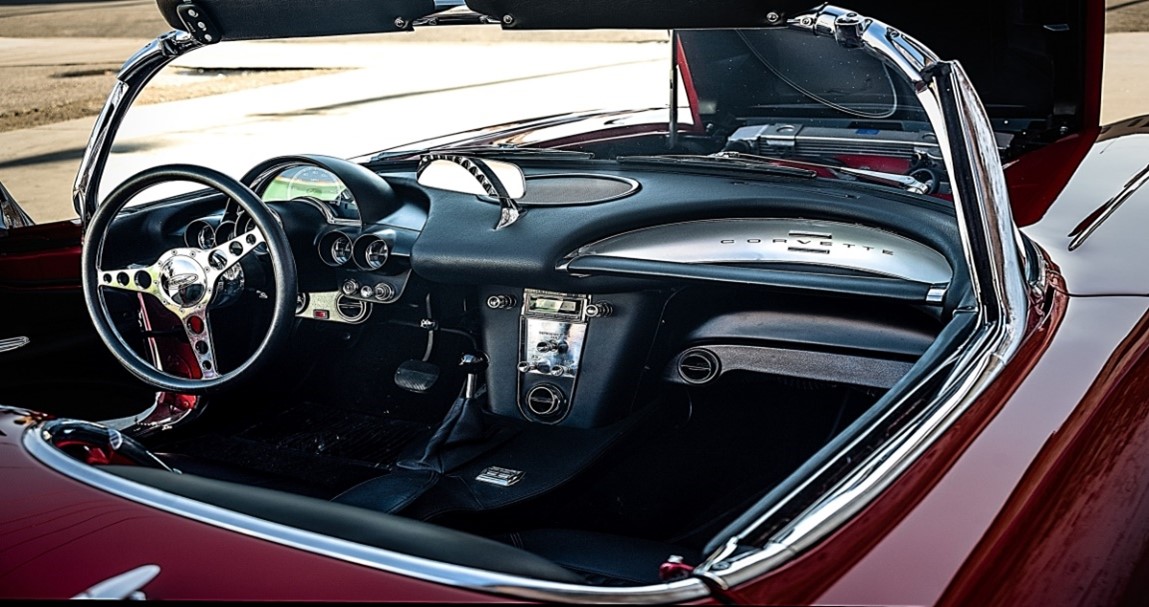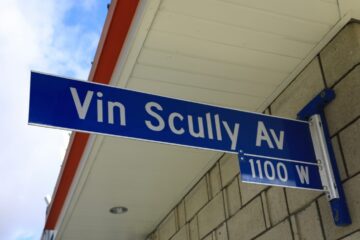The romance of a classic car is undeniable. Their distinctive design, history, and sheer unique qualities stand out in the modern automotive landscape. Classic cars like the 1961 Corvette, restored by Stuart Simonsen from Billings, MT, embody an era’s elegance and history, making them especially captivating relics in the modern world of cars. Yet, the thrill of owning such a beauty often comes with the many challenges of outdated functionalities. Stuart Simonsen’s expertise in integrating state-of-the-art technologies into these classic models illuminates how these timeless vehicles can be reimagined for the 21st century, maintaining their classic allure while enhancing their operational efficiency.
Stuart Simonsen’s Project
Stuart Simonsen has expertly restored a 1961 Corvette, transforming it from its original stock form into a modern classic. He began by upgrading the car with a new generation chassis, which included a contemporary frame and suspension system, complete with four-wheel disc brakes and independent suspension at both the front and rear. Under the hood, Stuart installed a new GM performance LS3 crate engine, known for its ‘Hot Cam’, paired with a 4L80 transmission. Inside, the Corvette received a fresh Al Knoch interior, enhanced with Dakota Digital Instruments and a Vintage Air climate control system for a blend of classic style and modern comfort. The car’s electrical system was completely overhauled using American Autowire Wiring. Stuart chose Budnik Wheels to complement the car’s aesthetics, and to complete the restoration, he had the car painted in its original Roman Red color, a task expertly handled by Daniel’s Auto. This meticulous work underscores Stuart Simonsen’s dedication to preserving the classic beauty of the Corvette while infusing it with contemporary performance and luxury.
Conceptualizing the Project
1. Identifying Goals: The first step in modernizing a classic car is determining what you want to achieve. Are you looking to simply add a few modern conveniences, or are you aiming for a full-scale restoration with top-to-bottom modernizations (a restomod)? Understanding your goals will guide your decisions and budget.
2. Budgeting: Upgrading a classic car can be an expensive endeavor. It’s crucial to set a realistic budget that includes not just the parts and technology, but also the labor, which can often become a significant part of the cost.
3. Finding the Right Professionals: This kind of project often requires a team of skilled professionals, including mechanics who specialize in classic cars, electricians, and interior designers.

Engine and Performance Enhancements
- Engine Swaps and Upgrades: Replacing the engine is often the most impactful change. Modern engines offer better fuel efficiency, more power, and lower emissions. For the eco-conscious, electric engine conversions are becoming increasingly popular.
- Transmission Overhauls: A modern transmission can drastically improve the entire driving experience. Options include converting from manual to automatic, upgrading to a modern manual transmission, or even installing a continuously variable transmission (CVT) for smoother acceleration and optimal fuel efficiency.
- Suspension and Brakes: Upgrading to a modern suspension system improves handling and ride comfort. Disc brake conversions are common, providing better stopping power and reliability than the drum brakes found on most classic cars.

Interior Modernizations
- Digital Instrumentation: Modern digital displays can replace or complement classic analog gauges, providing more accurate readings while maintaining a retro look.
- Audio System Upgrades: While maintaining the classic look of the dashboard, a state-of-the-art sound system can be installed, often with hidden speakers and modern features like Bluetooth connectivity and touch screen controls.
- Comfort Additions: Installing modern seating with better ergonomics and support, along with upgraded heating and air conditioning systems, adds significantly to a comfortable experience within the vehicle.
Advanced Safety Features
- Integrating Modern Safety Equipment: This might include installing modern seat belts, airbags, and even adding structural reinforcements to the vehicle’s chassis.
- Lighting Upgrades: Switching to LED lighting not only improves visibility but also consumes less power.
- Parking and Driving Assistance: Discreetly adding rearview cameras, parking sensors, and even blind-spot monitoring systems can greatly enhance safety without detracting from the car’s classic aesthetic.
Electrical and Connectivity Enhancements
- Modern Electrical Systems: Upgrading the electrical system is often necessary to support new technology and ensure reliability.
- Infotainment Systems: Modern infotainment systems can be integrated into the classic dashboard, offering GPS navigation, smartphone integration, and even Wi-Fi connectivity.
- Electronic Fuel Injection (EFI): Replacing the old carburetor with EFI improves the car’s fuel efficiency and performance, and it can even be tuned to maintain the car’s original driving characteristics.
Overcoming Challenges
- Maintaining Authenticity: It’s a delicate balance to modernize a car while keeping its soul intact. Each modification should be carefully considered to maintain the car’s original spirit. Balancing modernization with authenticity is a craft Stuart Simonsen excels in, ensuring each modification respects the car’s heritage.
- Legal and Regulatory Hurdles: Modifications must comply with local laws, particularly those regarding emissions and safety regulations. It is one of Simonsen’s standard practices to ensure that all his restorations and modifications comply with local regulations.
- Insurance and Valuation: Modified classic cars can be more challenging to insure, and their market value may be affected. It’s important to consult with insurance and valuation experts before and after making modifications. Understanding the impact of modifications on insurance and market value is crucial, an area where Stuart Simonsen provides expert guidance.
Conclusion
The process of modernizing a classic car is as much an art as it is a science. It requires a deep appreciation for the vehicle’s history, an understanding of modern automotive technology, and a clear vision of the desired outcome. When done right, the result is a truly unique vehicle that offers the best of both worlds: the timeless appeal of a classic car, simultaneously enhanced by the performance, comfort, and safety of modern technology. This harmonious blend of past and present ensures that these cherished automobiles continue to turn heads and provide joy on the open road for years to come.


